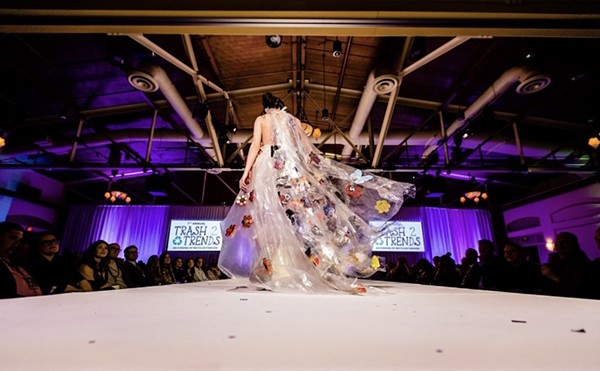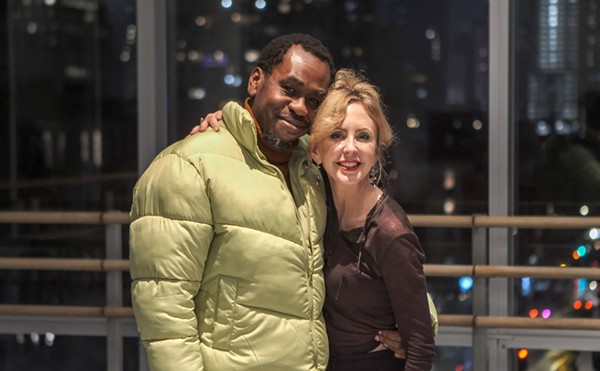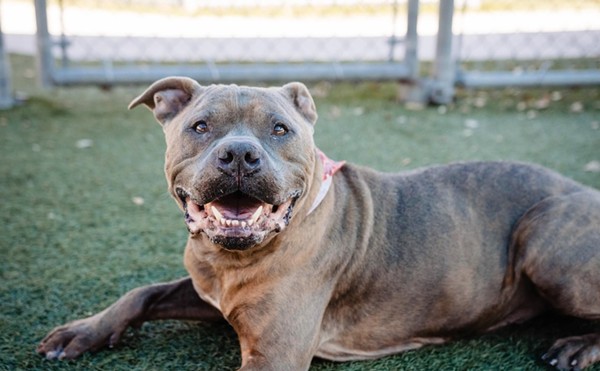If you've travelled on I-4 through Orlando in the last decade, you've seen the neon-decked LYNX Central Station, the downtown hub of the Central Florida Regional Transportation Authority. (You know, the building with the undulating roof that in an alternate universe would just be a huge Miami Subs.) If you've never been there or never been on a bus in Central Florida, you're not alone. "Not many people ride it, and part of their argument for not riding it is because they've already decided that it's of no use to them," says Patrick Greene, curator of the Gallery at Avalon Island and the visionary behind the Corridor Project, "a site-specific contemporary art museum" whose conceptual works appear in ever-shifting venues throughout the I-4 corridor. "Maybe if everybody checked it out, at least then we might come up with more insight." To that end, Greene launched the Transit Interpretation Project (TrIP) under the umbrella of the Corridor Project, enlisting a cadre of artists and creatives from across the disciplines, challenging each of them to ride a different route and create an artistic response.
The most visible service of the Central Florida Regional Transportation Authority is the LYNX bus system, consisting of 280 air-conditioned, biodiesel-powered coaches running 71 fixed routes which weave through Orange, Seminole and Osceola counties. For the 1.8 million people residing therein, a one-way fare costs $2 and transfers are free if made within 90 minutes. A monthly pass costs $50, and in Phase 1 of the Transit Interpretation Project, artists are handing off the bus pass to each other after completing their chosen route. Contemporary dance group Voci Dance sent three dancers along Link 13, improvising movements for a planned larger work. Other contributors to TrIP include Cirque du Soleil music director (and Timucua Arts White House host) Benoit Glazer, local bike-share pioneer Sarah Elbadri, and algorithmic artist Nathan Selikoff.
David Moran, a graduate student focusing on game design in UCF's Center for Emerging Media, was the first to complete his route. A daily user of the LYNX system for the past two years, he took a bus from UCF to Rollins, then another to the downtown bus station, then another to Parliament House, taking photos and video along the way and posting 194 of them on Instagram (search for the hashtag #trip_orlando). He then walked for six hours the entire way back to his home near UCF, reflecting on the reality that some commuters face when their own schedule doesn't quite line up with the bus schedule.
"People can be kind of stranded places because of the fact that [the bus system] goes dark at a certain time," says Moran. "What does that mean for people that still need to get around? Not everybody operates 9-5, Monday through Friday." Moran hopes that his photographs communicate these issues, as well as the sense of isolation and marginalization that come with not participating in the dominant commuter culture.
Fashion designer Bethany Mikell completed her trip Nov. 10, along with friends and fellow artists Kelly Berry and Megan Steward. Berry and Steward sketched many of the passengers who came and went along Link 8, which goes from the downtown LYNX Central Station to International Drive. The sketches will be embroidered on a dress Mikell is designing, which will feature a macramé detail of the shape of the route itself. She plans to have the dress modeled and photographed at locations along the route.
Artistic concerns aside, Mikell says their interactions with other passengers were very positive, with curious riders asking about the sketches and the project. One man, however, was extremely anxious at the beginning of their trip when the bus arrived five minutes late. If he missed the transfer to his next bus – the last one of the day – he would have had to walk two hours from the bus stop to his home.
Interactions between artists and the community are one part of why Greene started the project to begin with. The diverse group he has recruited includes established, emerging and amateur artists. Every piece created, every story told is an opportunity to see the city and the region from another perspective.
"If you're using mass transit in the South, there's a socioeconomic overlay to the perception of your presence there," says Dr. Julian Chambliss, associate professor of history at Rollins College and another TrIP participant. Chambliss, whose research has focused on early urban planning and urban history, is interested in the "real and perceived" urban experience, and he plans to explore how the perception policymakers have of the people who use mass transit affects their decision-making. "Perception is very important to the urban experience … If you perceive things to be a certain way, that enforces or supports policy to be a certain way. If you change perception, arguably you can change policy."
Greene encourages the artists to focus on the creative aspect without concern for where the works will be shown. While he hasn't dismissed the possibility of an exhibition of the work, he says the works will be documented on a website, and that the idea is more in line with site-specific art – performances and installations created for a specific location. Artists are free to display or publish or sell their work as they see fit, without confining their creativity to the parameters of a gallery space.
Statistics bear out Greene's assertion that the LYNX routes are underutilized. In 2012 the total average ridership was 85,000 passenger rides (one-way trips) per weekday, meaning between 95 and 97 percent of the population finds some other way to navigate Central Florida's sprawling expanse of asphalt. For contrast, the area served by New York City's Metro Transit Authority (which includes both the bus and subway system) has a population 8.5 times greater than that served by LYNX, but has a ridership 100 times greater. Public transit in Orlando, like many Southern metro areas with low population densities, isn't ingrained in everyday life for most of the population.
Greene hopes that the multiplicity of experiences and perspectives documented in the Transit Interpretation Project will encourage dialogue about the benefits and drawbacks of using public transit, while documenting "stories about the bus, Orlando and the people who live here."
















